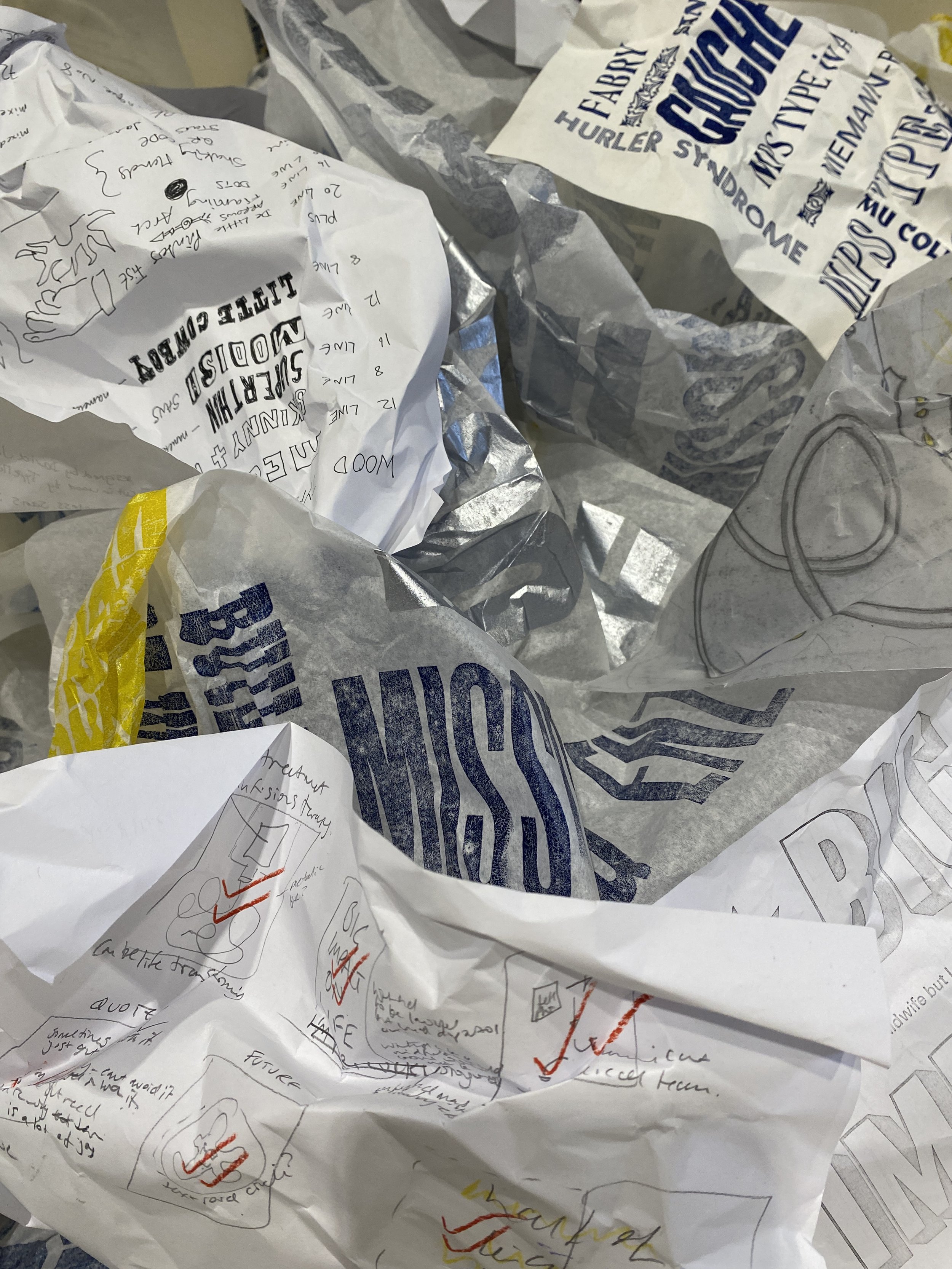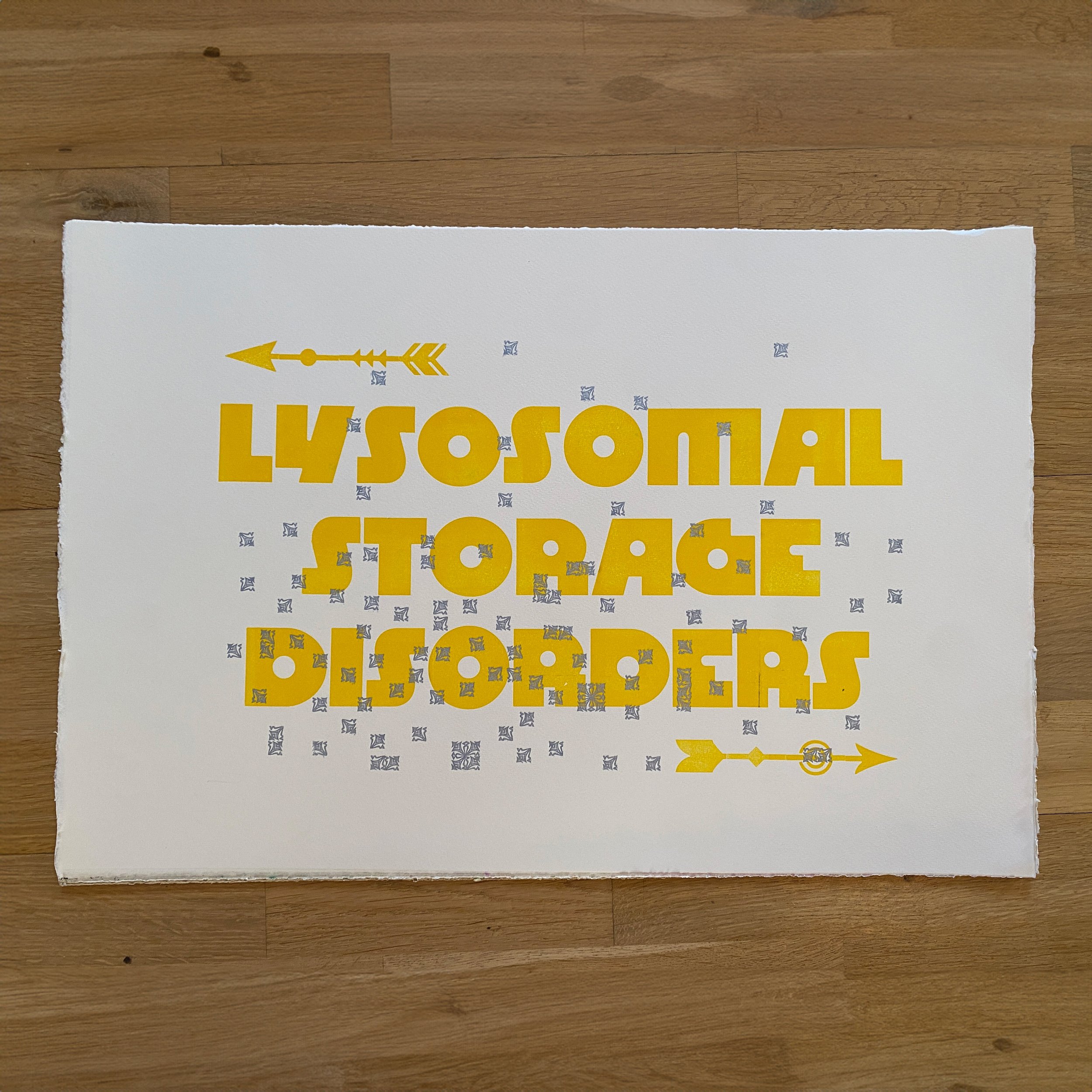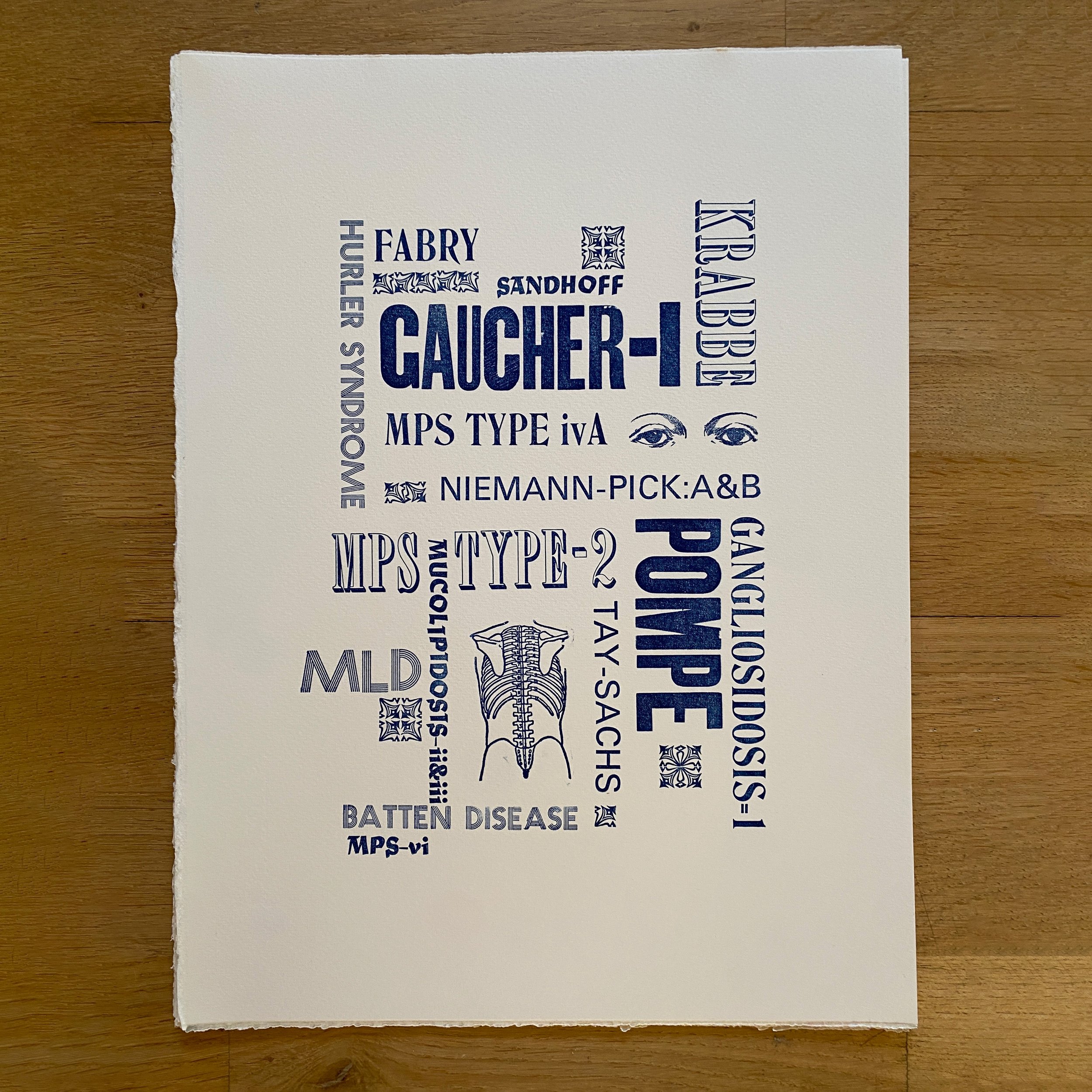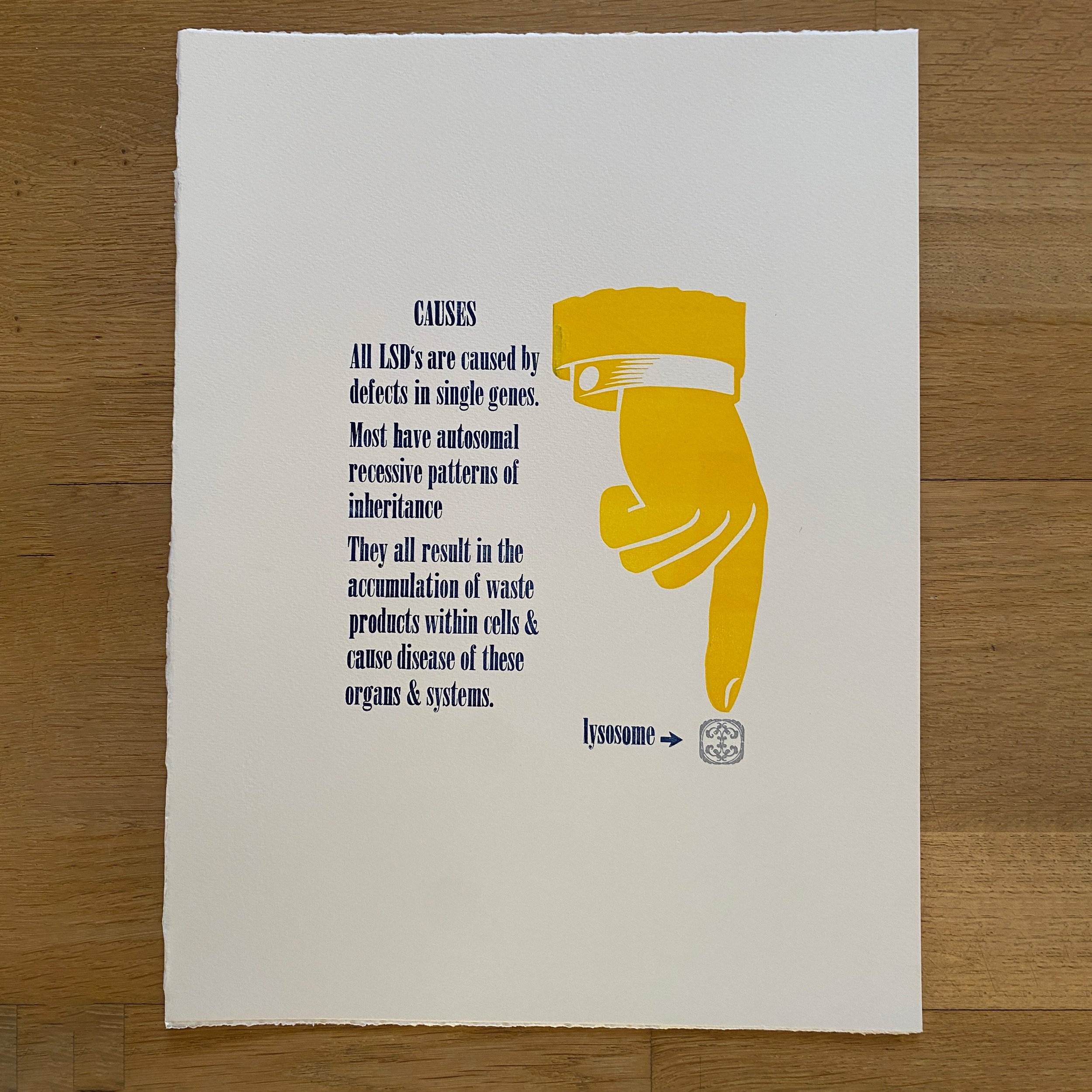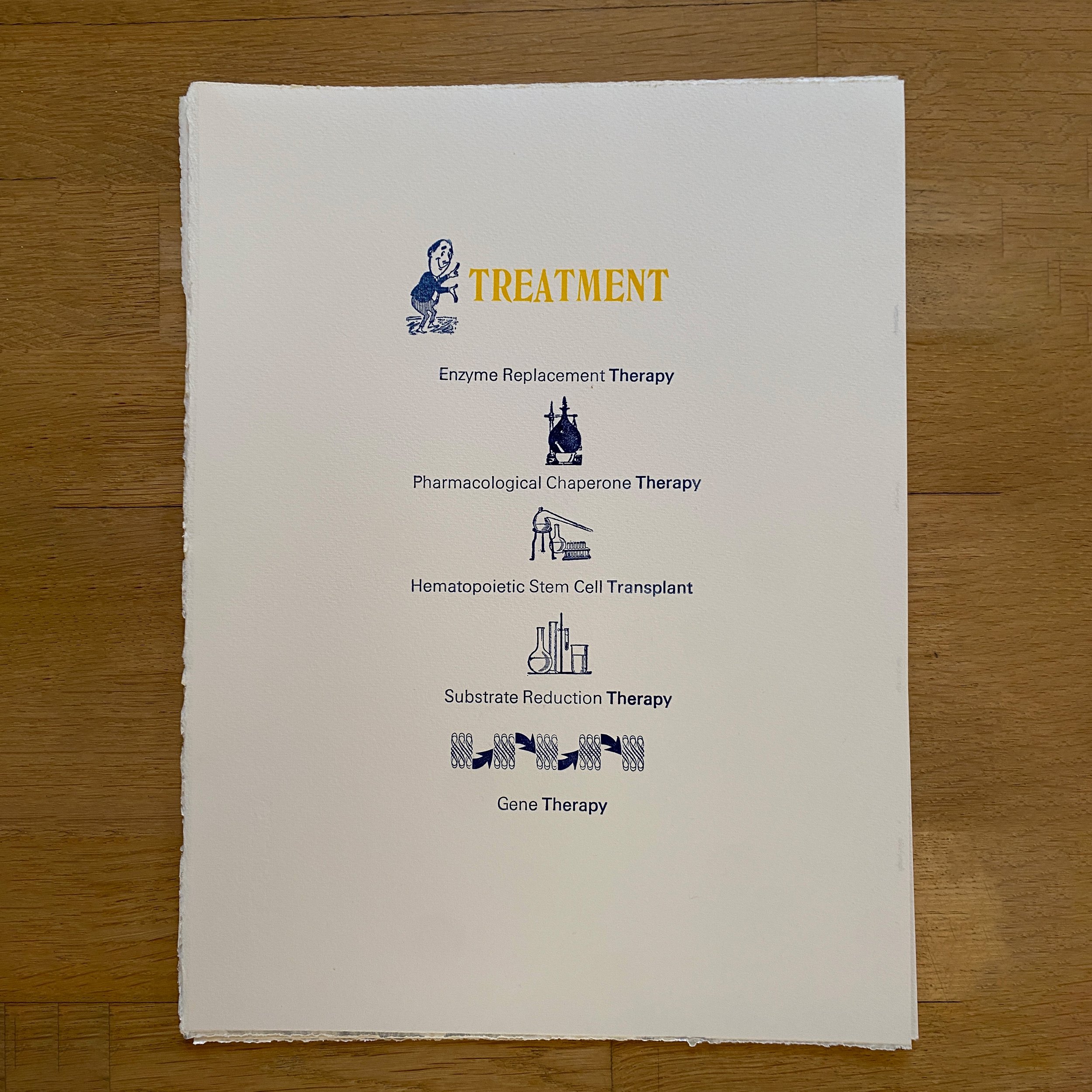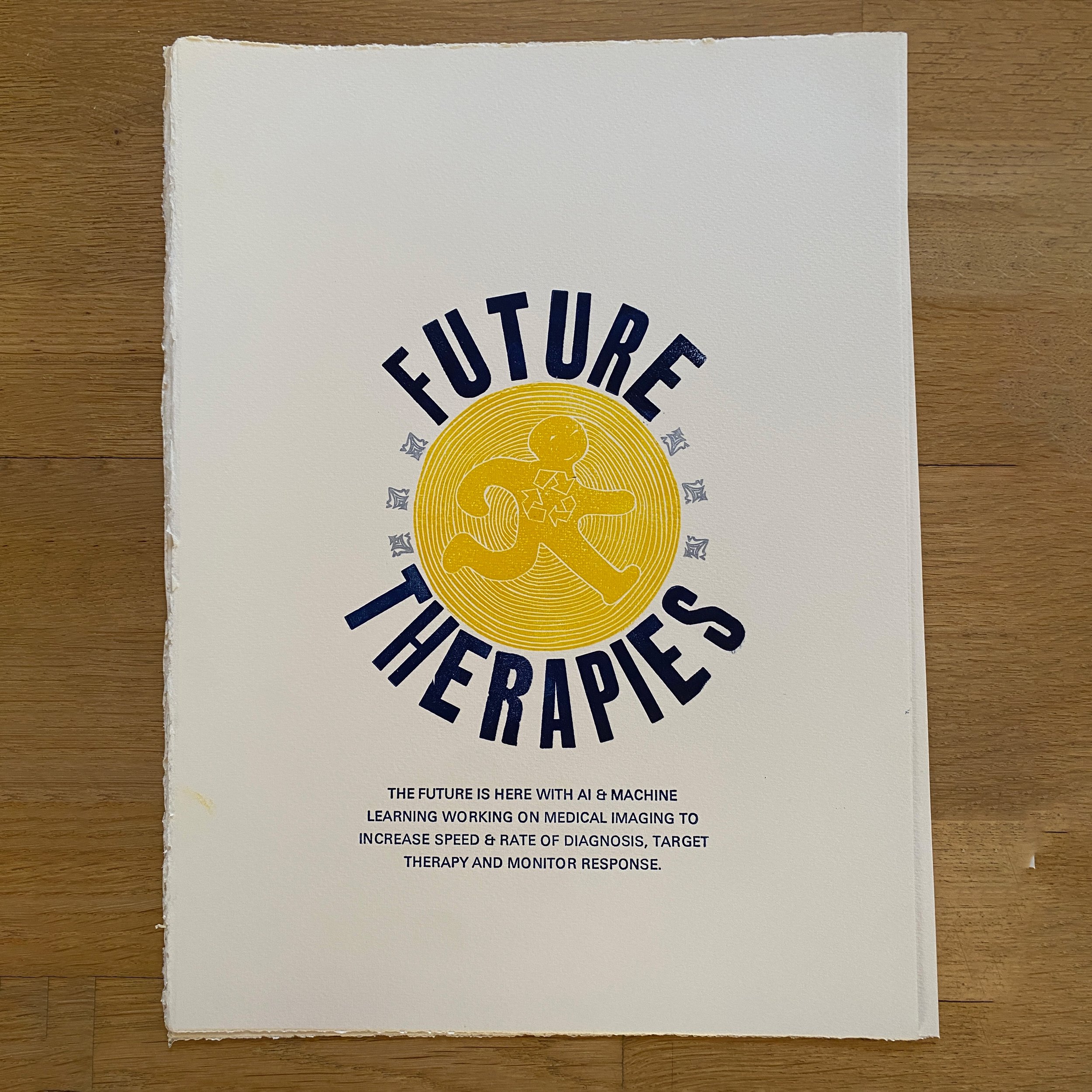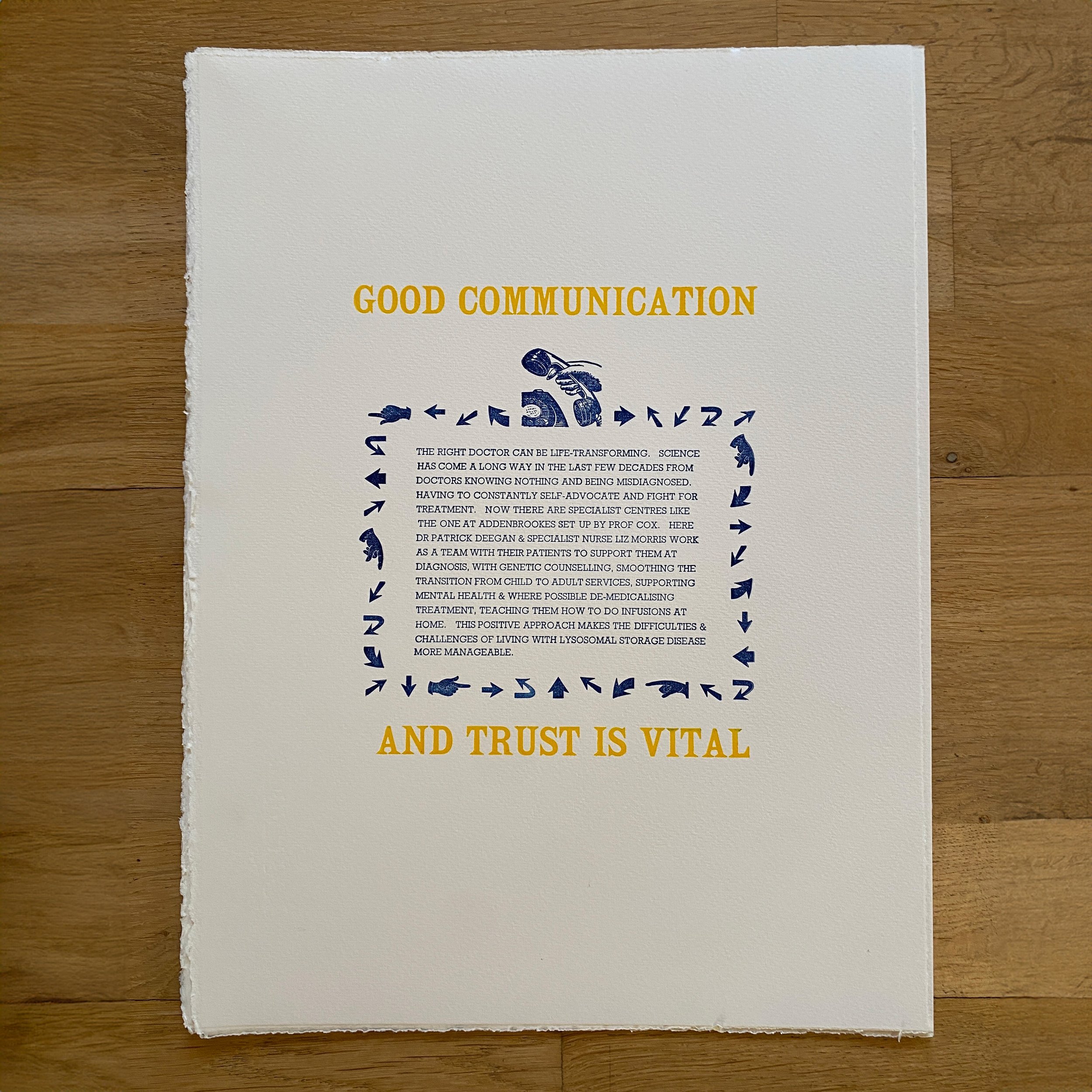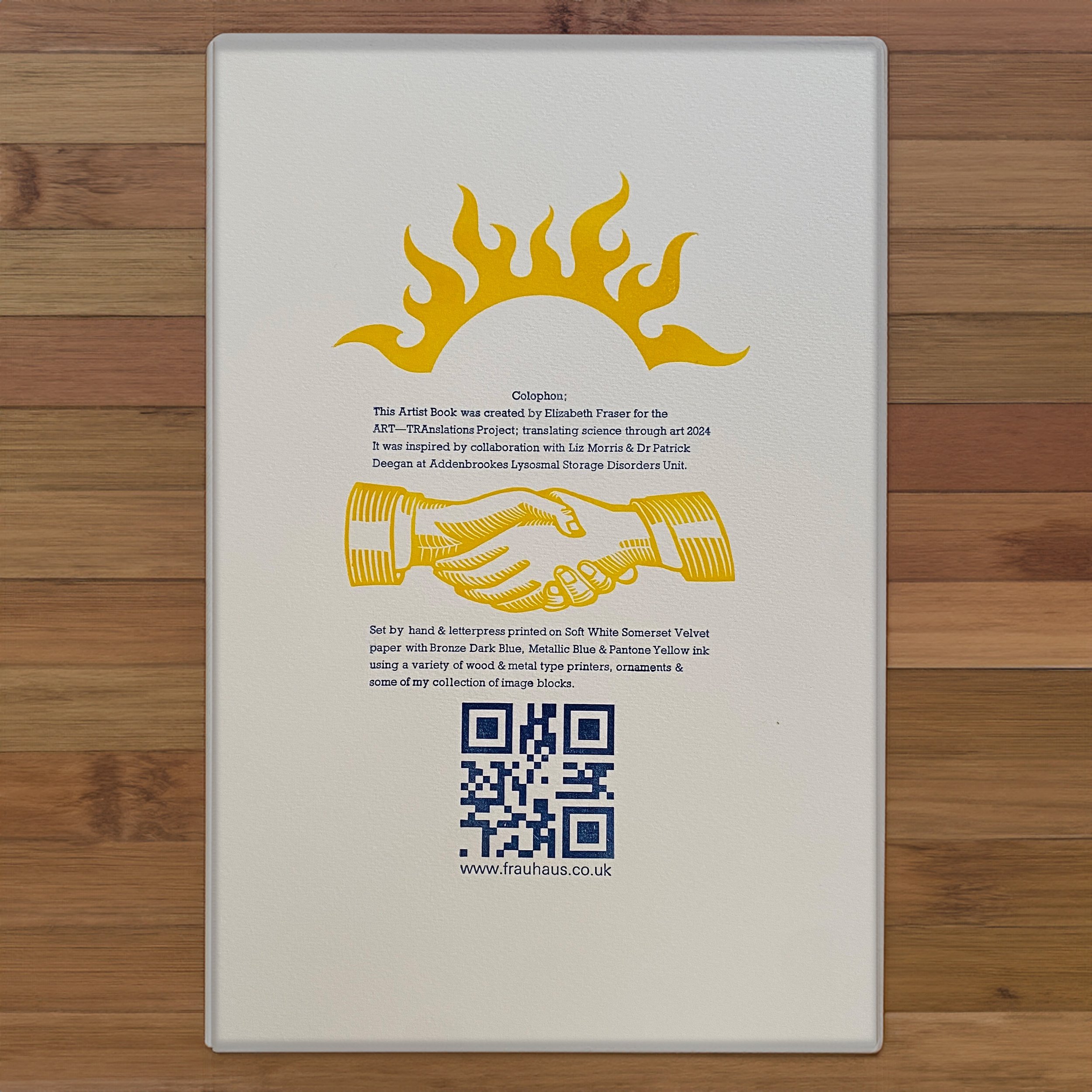This piece was the result of a project initiated by LifeArc and CamRARE. They paired artists and scientists to collaborate on the creation of artworks to be shown at the LifeArc Translational Science Summit (London, April 2024) and RAREfest24 (Cambridge, Nov 2024). I was paired with Liz Morris a specialist nurse and Dr Patrick Deegan who work in the Lysosomal Storage Disorders Unit at Addensbrookes Hospital in Cambridge. I was able to visit the hospital clinic and have an in depth introduction to this collection of rare disorders that I had never heard of before. I was also put in touch with a few of their patients which gave a whole new voice and dimension to the information I was collecting. It is always a privilege to work with scientists, I find their work fascinating and never quite know when I begin what path my own work will follow or how it will evolve through my own working process. I am very pleased with the results this time as I felt a real conceptual connection between the way I work and some of the biological processes involved.
Lysosomes are the waste disposal units of cells. Genetic encoding errors may effect their enzyme function. Not immediately apparent at birth, these rare mutations trigger uncontrolled waste product accumulation in cells and organs causing terrible damage, often with life-limiting effects. This handprinted installation explores this cumulative outcome. Reflecting science, scientist and patient the free-standing series of pages in zig-zag form stands open — a stylized organelle. Contained within its boundary, are waste products of my creative process: working notes, plans, test prints, ephemera. Inviting a closer look, this piece may be interpreted as a ‘poorly cell’ might appear through a microscope, a bit crumpled and sad. Its contents embodying the difficulties and challenges people with these disorders must carry with them daily. It also celebrates science and art as related endeavours. For me, it expresses the integral joy of creativity and process common in both disciplines when pursuing novel interpretations and new discoveries.
Handset and printed using metal and wood type, printers ornaments and linocuts
Printed on Somerset Velvet Soft White 300gsm paper
Covered with Sarah Amatt hand marbled paper
An intended edition of 3 books with selected pages available as individual prints (see shop)
Watch this short video of me in my studio to see some of the processes involved in making this work.




